The reason tourists visit Potosi these days is to experience for themselves the brutal nature of the contemporary mining operation at Cerro Rico. Koala tours promises a very realistic experience. Before Christi and I go underground, though, we visit the beautiful monastery of San Francisco, which has wonderful roof-top views of the city and the infamous mountain.
Our guide to Cerro Rico is a jovial 31 year- old Quechua guy called Efrain who speaks wonderful English. Although working for Koala tours is his main job now, he still works in the mines during the tourist off-season (December – February). We begin by kitting up in rubber boots, protective pants and jackets, and a helmet and headlamp. With more than a little trepidation we approach Candelaria, a traditional working mine where everything is done by hand. We enter through a classic mine shaft with walls supported by beams of wood while overhead tubes and wiring (for ventilation and power) dangle precariously. In addition to our protective clothing, Efrain advises to wear bandanas over our nose and mouth to reduce some of the toxic dust entering our lungs, but this makes breathing more difficult. And although we’re descending into the depths of the mine, our elevation is still around 14,500 feet. Our first stop is to pay homage to El Tio, the devil. The miners argue that they are a lot closer to hell than heaven, so appeasing Lucifer is much more important – not only to ensure safety but success as well.
The first level is not too difficult, just a little ducking here and there, but then we truly begin to scramble down to the lower levels. It’s slippery and dusty with unannounced low ceilings; sometimes we’re crawling low on our hands and knees – at other times climbing down rickety ladders. And it’s getting hotter and more claustrophobic and without the headlamps we brought with us we would be in total darkness. God forbid my light goes out now.
Occasionally we spot eerie figures in the dark pushing wagons full of ore along rail tracks. Mining is undeniably back-breaking work, but throw in the toxic dust, the altitude, the heat, and the sulfur, arsenic, and asbestos that clings to the mine shafts and Cerro Rico is nothing less than hell on earth. We finally reach the unventilated active mine face on level 4 and the temperature is approaching 100oF. We watch miners chiseling a 2-inch diameter 20-inch long hole in the rock face that will eventually be plugged with a stick of dynamite. Efrain says setting up one explosion takes 5 hours. The miners work in these conditions 10 hours a day, six days a week. The ore they recover, which is of much lower quality than that quarried during the mine’s heyday, earns them US$70 per ton from the local smelters. A group of 10 miners produce about 2 tons per day between them, grossing each miner US$15, but with overheads and taxes they net nearer to US$7 (about US170 per month).
Climbing back out of the mine is more exhausting than the descent and both Christi and I are relieved to finally escape the suffocating confines of the mountain. The air has never been fresher nor the sky appear so blue. Cerro Rico is not a place I plan on returning to anytime soon.
Blog post by Roderick Phillips, author of Weary Heart, a gut-wrenching, heart-wrenching, laugh-wrenching ride

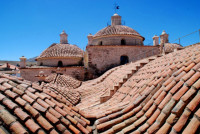
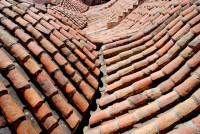
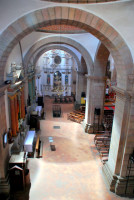
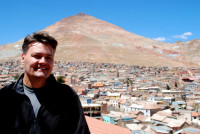
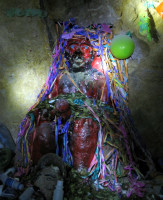
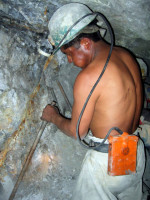
Speak Your Mind